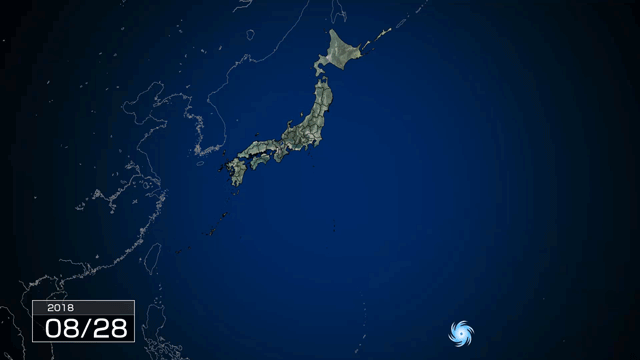Winds at more than 160 km per hour overturned cars and trucks and ripped off roofs, leaving widespread damage. In Hyogo prefecture, about 100 cars went up in flames, thought to be an effect of sea water on the batteries.
Kansai International Airport was inundated and is now closed. The storm stranded about 3000 people inside for more than 18 hours.
The day the airport shut down
A major travel hub in Japan, the airport sits on a man-made island off the coast of the city of Izumisano in Osaka Prefecture. It was pummeled by furious winds that escalated in the afternoon, and surging water flooding its runways. Several planes on the tarmac were submerged up to their engines. An airport worker at the scene said he felt the "threat to his life" as the flood waters closed in.

The furious winds sent a fuel tanker crashing into the bridge that connects the airport to the mainland, drifting at a speed of 9 kilometers per hour and damaging the road. All 11 crew members were rescued and none were injured. Transport authorities towed the vessel away early on Wednesday morning, but cut off from all major transport routes, the airport had to shut down.
Power was lost in parts of the terminal buildings during the storm. "This is a super typhoon," said a tourist from Hong Kong, adding that she hoped she still would be able to fly home.
Travelers lined up at a convenience store in the facility to get food, but bread and snacks were quickly sold out. Airport officials said about 3,000 travelers and workers had to stay there overnight.

Rescue begins
The next day, the airport was offering free ferry service to Kobe Airport in neighboring Hyogo Prefecture. The first boat departed around 6:30 AM, docking in Kobe about 30 minutes later. The airport authority also started shuttling people out by bus at around 9 AM, after confirming the road on the damaged bridge was safe.

People who had finally managed to get out said they were exhausted.
"I'm so tired because I couldn't sleep all night, but I'm relieved because I thought I might not be able to get out," said one woman, interviewed at Kobe Airport. A man in his 60s heading to Hawaii to attend his child's wedding also said he was exhausted, and disappointed that he had to cancel his plans.

Some complained about the conditions in which they were stranded.
"It was very hot inside the building with no air conditioning because of the blackout," said one tourist. "It was quite shocking because I never expected that a typhoon could damage an airport like this."
The airport remains closed on Wednesday and 162 domestic flights have been cancelled.
Fears about economic impact
But concerns are mounting that closure of the airport, a main hub for travelers and cargo, will have a serious effect on the economy.
The Kansai airport connects Japan to some 80 cities around the world. The operator says they processed an average of 460 passenger flights a day last fiscal year, accounting for more than 78,000 domestic and international passengers per day. That number was up 12 percent from the previous year to more than 28 million, as the Kinki region, including Kyoto and Osaka, continues to attract tourists from overseas.
Officials with a low-cost carrier serving destinations in Thailand and Hawaii expressed concerns. The AirAsia Group said they're not sure when the airport will re-open.
"Kansai Airport is a hub connecting visitors from other Asian countries to western Japan. We're concerned this might affect our business," said one official.

The airport is also a major logistics center for shipping goods overseas. Local customs officials said more than 50 billion dollars' worth were flown out of the airport last year to locations around the world. That makes Kansai airport Japan's 2nd busiest for air cargo after Narita airport near Tokyo. 70 percent of these exports went to China and elsewhere in Asia. They include computer chips and other electronic parts, as well as pharmaceutical products. Exporters are worried that a prolonged closure could be a serious disruption.

Dealing with the aftermath
Jebi has since moved north and has been downgraded to a tropical storm. Now begins the task of repairing the damage and returning to normal.

The storm has left a large hold in the wall of the main airport building in Hokkaido. It has killed 11 people and injured 300. A complete picture of the damage has yet to be determined.
The Japanese government has appointed a team to help Kansai International airport recover. Prime Minister Abe has promised an all-out effort to reopen the airport and resume flights as quickly as possible.

